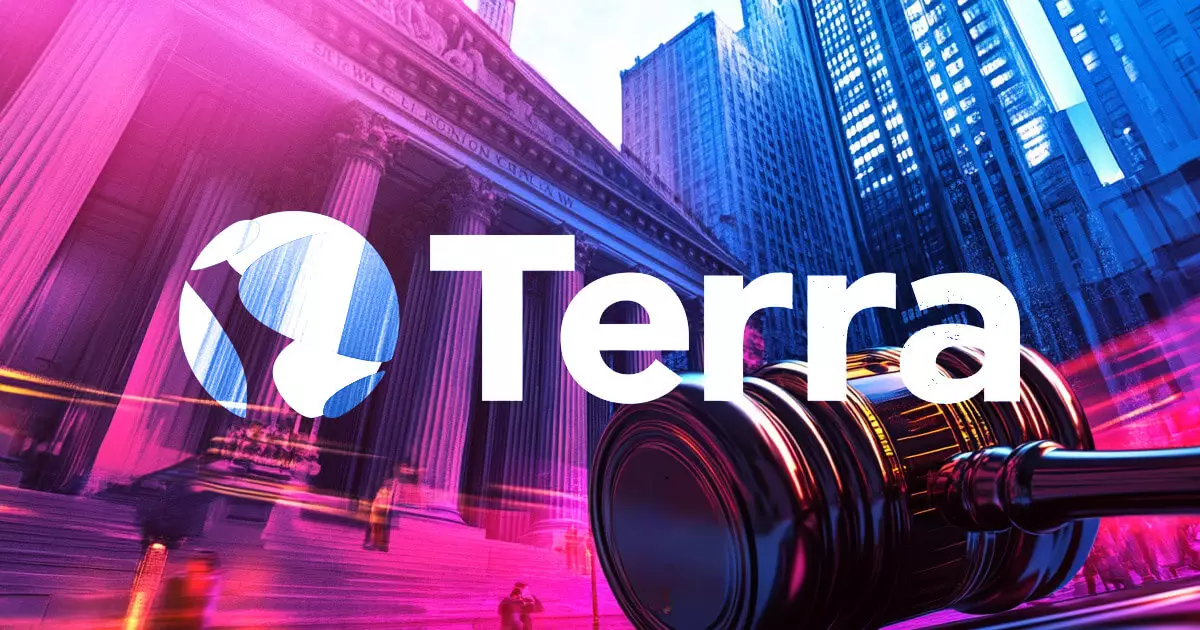The turbulent landscape of cryptocurrency continues to evolve, characterized by regulatory scrutiny and fluctuating investor confidence. One of the most significant recent developments involves the Securities and Exchange Commission (SEC) charging the Hong Kong-based subsidiary of Jump Crypto, Tai Mo Shan Limited, for allegedly misleading investors concerning Terra USD (UST) after the stablecoin’s dramatic loss of its long-standing $1 peg. This incident not only highlights the precarious nature of algorithmic stablecoins but also emphasizes the importance of regulatory oversight in the burgeoning cryptocurrency market.
The Allegations Against Tai Mo Shan and Terra USD
At the heart of the SEC’s allegations is the assertion that Tai Mo Shan engaged in deceptive trading practices that projected an unwarranted confidence in UST’s price stability. When UST began to falter in May 2021, afflicted by market forces and systemic flaws inherent in its design, Terraform Labs reportedly solicited the intervention of Tai Mo Shan, which purchased over $20 million worth of UST. This action was allegedly framed as a mechanism to restore and maintain the token’s peg, misleading investors into believing that the algorithmic design was sufficient to uphold its value without external support.
The SEC contends that Terraform’s portrayal of UST’s functionality was misleading, given that the company’s narrative relied heavily on Tai Mo Shan’s purchases to reestablish UST’s value. These practices not only reflect a failure in maintaining transparency with investors but also hint at the broader vulnerabilities in the operational architecture of algorithmic stablecoins. The reliance on external purchasing to uphold a digital asset’s value continues to raise troubling questions about the sustainability of this model.
The SEC’s charges resulted in substantial financial repercussions for Tai Mo Shan, which agreed to disgorge profits totaling over $73 million. This sum, along with additional penalties and interest, brings the company’s total payment to approximately $123 million. While Tai Mo Shan neither admitted nor denied the SEC’s findings, the settlement underscores the gravity of deficiencies identified in the behavior of the firm and the greater implications for the cryptocurrency industry.
One of the pivotal legal elements involves the characterization of the LUNA tokens distributed by Tai Mo Shan as unregistered securities. The SEC alleged that the firm functioned as a statutory underwriter by rapidly selling these tokens into the marketplace, thereby constructing a false narrative of demand for both UST and LUNA. With regulatory bodies increasingly vigilant about the distinction between securities and non-securities in the crypto domain, this case sets an important precedent.
The fallout from the UST collapse and the SEC’s subsequent charges against Tai Mo Shan have severely damaged the reputation and viability of the entire Terra ecosystem. Following the implosion of its stablecoin model, the original Terra chain, now known as Terra Classic (LUNC), trades at drastically lower values, while efforts to launch a new token and network have met with skepticism from the market. Trust, once burned, is exceedingly difficult to rebuild, especially amid ongoing legal battles and investigations.
Terraform Labs, led by co-founder Do Kwon, remains embroiled in legal controversies, including a high-profile case where Kwon was found liable for fraud. The company’s Chapter 11 bankruptcy filing in January 2024, with significant liabilities disclosed, paints a harrowing picture of financial mismanagement and operational turmoil. Leadership changes, such as the appointment of Chris Amani as CEO in July 2023, represent a desperate materialization of the need for stability and accountability in a fractured environment.
The Future of Regulatory Oversight and Market Confidence
As the regulatory environment continues to tighten, many in the cryptocurrency space are beginning to assess the long-term ramifications of such oversight. The SEC’s focus on whether tokens associated with Terraform fit the definition of securities is symptomatic of a larger trend towards increased scrutiny of cryptocurrencies in general. Rigor regarding disclosures and transparency has become paramount as regulators aim to protect investors from misrepresentation.
Even amidst the launch of new chains, the underlying concerns surrounding UST’s collapse serve as a cautionary tale for investors and issuers alike. With losses exceeding $40 billion across digital assets post-collapse, the fallout is far-reaching, suggesting that confidence in cryptocurrencies may take time to restore. Ultimately, the intersection of robust regulatory frameworks and market integrity will determine the future trajectory of the cryptocurrency world, where both innovation and caution must navigate an evolving regulatory landscape.

